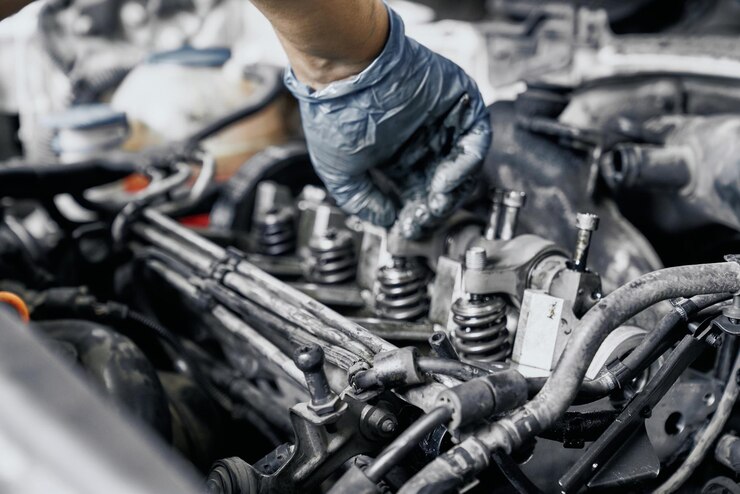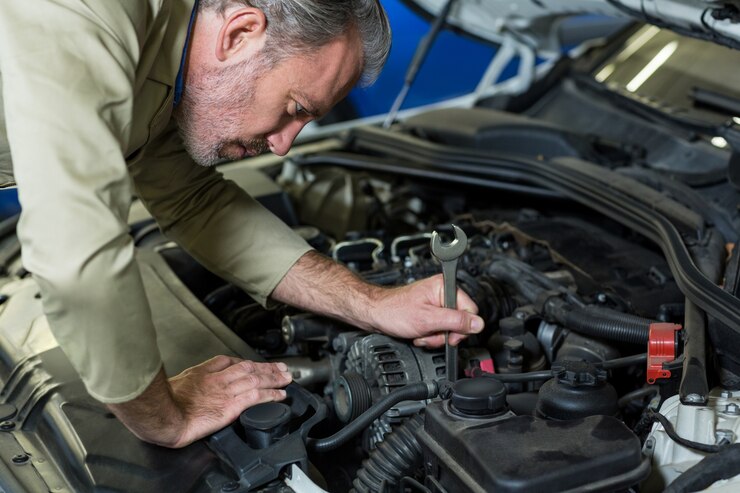Contents
You’ve observed all regular service intervals, changed the engine, transmission and brake fluids earlier than deadlines, and haven’t been hard on the throttle or skimped on low-octane fuel. But there’ll come a time when the car starts losing power, weird noises sound alarms, and the dash resembles a Christmas tree. All engines endure wear and tear, and some parts fail earlier than others. If this is your car, you have two choices – either an engine rebuild or a used or new engine replacement. What you choose will based on the overall condition of the engine, your expectations and of course, your budget.
Signs You Need an Engine Rebuild or Replacement

Increased fuel consumption, loss of engine oil pressure, frequent overheating, excessive exhaust smoke and loss of power are all signs that something is wrong. Damaged piston rings lead to loss of compression and oil leaks; leaking coolant and failing cooling system parts (water pumps, thermostats, radiators and plumbing) cause excessive heat and worn spark plugs or damaged engine internals (pistons, connecting rods and bearings) result in misfires, problems when idling and stalling. All point to significant or irreparable wear to one or multiple parts. Catching signs on time will save you considerable cash, with minor symptoms remedied by using rebuild kits engine, and advanced wear necessitating a more costly full engine replacement.
What is an Engine Rebuild?
An engine rebuild or overhaul involves breaking down the engine into main parts (top and bottom end), thoroughly cleaning individual components to remove debris and built-up grime, assessing which parts are damaged, worn or beyond repair, and replacing them with original equipment (OE) or aftermarket units. This can be achieved with separate components, or engine rebuild kits, often containing new pistons, piston rings, connecting rods and bolts, head gaskets, and main and big end bearings. Any necessary work, such as machining cylinder heads, is carried out and the engine is then reassembled with the new parts to restore it to factory specifications and performance.
Types of Rebuilds
Rebuilds can be comprehensive and involve many parts, or subtle with few components replaced. Generally, there are three basic types:
- Out-of-frame – for an engine with significant damage, a full or out-of-frame is the best option. The engine is removed from the vehicle, undergoes a complete and detailed inspection to assess the level of wear, and is rebuilt with a long list of parts. Usually, this includes cylinder liners, pistons and position rings; main and conrod bearings; conrods and cap bolts; head and exhaust gaskets; and if there’s is considerable damage -the engine block and crankshaft. The rebuild also requires a cylinder head pressure test to check for leaks,
- In-frame – this rebuild is done to engines with minor wear, and is a cost-effective way of bringing it to factory condition. The process involves replacing liners, pistons, rings, bearings and gaskets.
- Re-ring rebuild – this includes liners, piston rings, conrod bearings, main bearings, head gaskets and oil pan gaskets. This type of rebuild means the pistons are in good condition, but the oil and compression rings are replaced.
Choosing the right rebuild kits engine is based on the condition of the powerplant as a whole, and the issues the engine has.
Pros and Cons

Regardless of which type of engine rebuild you choose, be aware of the pros and cons, especially when compared to other restoration methods, including a complete engine replacement. Not all engines are created the same and not all endure the same level of wear. For most car owners considering a rebuild, the pros outweigh the cons. This includes cost-effectiveness, particularly when choosing packaged kits with the appropriate parts as opposed to buying them separately. When compared to a full new or used engine replacement, a rebuild is often the cheaper, simpler and faster solution without impeding performance or future reliability.
Rebuilding an engine also allows for customisation and choosing parts that provide better performance or increased longevity. Car owners can choose parts from dozens of brands, tailor specific parameters to suit individual driving needs and opt for higher quality than what comes as stock. While horsepower and torque are what most people look for, better-built parts using strengthened materials also warrant they last longer. Kits are also easier to find than new engines or used variants in working order.
There are a few cons to contend with. While new parts in car engine rebuild kits match or exceed original power figures with improved designs, they can get pricey. Besides the cost of parts for specific engines, this is a lengthy job, meaning you’ll also be shelling out serious cash for a professional fit. Delicate tasks, like cylinder head machining, require precision machinery and skilled labour. But if you’re restoring a classic car, or need more power in a current model performance vehicle, this is often the cheapest and less time-consuming option that leads to the best results.

